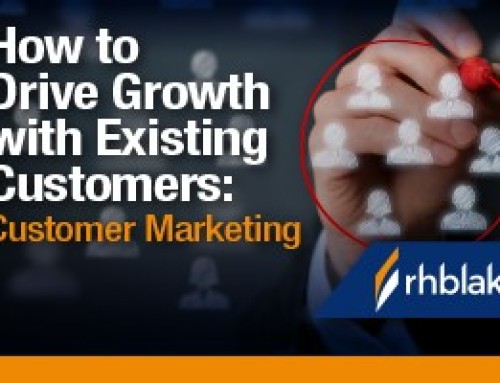Blogging is great, but…
Business-to-Business (B2B) marketers are intensely focused on executing inbound marketing activities to help drive business. This is because:
Today’s industrial buyers complete nearly 60% of their buying journey before contacting the supplier;
71% of B2B influencers looking for a solution start their research with a generic search;
And 90% of B2B influencers looking for a solution use search to research business purchases
Written by Dan Konstantinovsky
Strategic Marketing, RH Blake
![]()
Business-to-Business (B2B) marketers are intensely focused on executing inbound marketing activities to help drive business. This is because:
- Today’s industrial buyers complete nearly 60% of their buying journey before contacting the supplier;
- 71% of B2B influencers looking for a solution start their research with a generic search;
- And 90% of B2B influencers looking for a solution use search to research business purchases.
Furthermore, today’s marketers generally understand that having an ongoing blogging program that favorably differentiates your brand and drives opportunities is a critical component of any meaningful B2B inbound marketing program.
But recently there’s a significant challenge many B2B marketers are facing, especially when you are marketing engineered and industrial manufacturing solutions – those blog posts you’ve been writing aren’t working like they used to. Or worse – not working at all. What happened?
If it makes you feel any better, you’re not alone. Marketers are blogging 800% more today but are getting nearly 100% less engagement. There are several key trends that are causing this effect:
Free Download: 5 Key Steps to Developing a Digital Marketing Roadmap
A Must Have Digital Marketing Guide for Manufacturers

More direct competition
As with any advancement, success breeds increased competition. As more of your competitors grasp the value of inbound marketing, creating unique content that captures the attention of your shared target customers is increasingly more difficult. No longer can you simply write a generic 400-word blog post about your latest engineering accomplishment and expect customers to see and act on it. Marketers now spend significantly more time planning and executing in order to create blog posts that resonate. In fact, twice as many marketers are now spending 6+ hours on their average blog post compared to just last year! (That’s a lot of work!)
More clutter
Attention is the new currency for marketers. Everywhere you turn, there’s a new struggle to capture engagement. For example, there are nearly 2 million blog posts being written every single day adding to the clutter of content. Thus, when you’re developing a blog post, you’re not just trying to beat your competitors for attention, you’re battling against every attention-seeking source looking to be in front of your customer.
Reading takes (more) time
43% of people admit to skimming blog posts. And this percentage will only continue to climb as we’re driven to multitask more and our attention is increasingly splintered. Just look around you right now – you most likely have a smartphone within arm’s reach, a monitor (or two) with five to seven tabs open, and several urgent to-dos on your desk. If you have the option of reading a lengthy blog post or viewing an image/video instead, you’re going to naturally navigate towards the image/video. And not only because of distractions, but because we’re wired this way. In fact, 90% of information that comes to the brain is visual and processes 60K times faster than text. As marketers, we must adjust to our target customers’ behaviors and find creative ways to derive more value from our activities.
Lack of strategy and focus on the right metrics
When developing blogs, many marketers focus on activity metrics rather than business-growth targets. For example, you may be measuring the number of blog posts created per month, number of visitors to each blog post compared to a previous timeframe and number of shares across the relevant social media platform compared to a previous timeframe. As a result, marketers have gone all-in on creating blogs without taking the time to evaluate meaningful business impact metrics such as number of new organic subscribers to your email list, product demonstration/solution assessment sign-ups, leads and sales. In order to develop the right metrics for your business, you should create target “customer personas” or marketing identities you’re selling to that include how and where your customers engage with technical content. While focusing on developing blogs is a good thing, many people have mistakenly made traffic numbers the goal and lost efficiency (and success) in the process.
Subject Matter Experts / Engineers are busy and expensive
Your customers are seeking technical marketing content to help them make better informed decisions. However, unless you’re the unicorn of marketers, chances are you need to work with engineers or other professional subject matter experts and to develop this level of technical content. And because most engineers don’t have ‘creating new blog posts’ in their personal goals or job description, you’re faced with having to nag them to provide input, draft copy or review your drafts, which in turn can delay the process and cause frustration. Plus, most business owners and P&L leaders feel that engineers provide the most business value when they’re focused on core activities; every minute they are reviewing a blog post is a misused resource in their eyes.
Increasing impact on SEO
As Google’s organic search algorithm advances, the variables that impact organic ranking are changing as well. For instance, user engagement once someone visits your website is now a more critical variable than ever. And as a result, marketers must develop landing pages with stronger and more direct appeal to their target audience.
What’s the takeaway?
When you consider these trends and address them head on, the conclusion is to publish content that is faster and easier to digest, cuts through the clutter and is more appealing to the audience, reduces subject matter expert participation and takes maximum advantage of their knowledge.
One excellent way to do this is with video. Stories told directly by engineers can be compelling and focused. In addition, companies using video enjoy 41% more web traffic from search than non-users. Plus, with YouTube being the second most visited search engine after Google, effective videos should be a key component of any SEO program.
Need help with your content development? Learn more about our new lead-generating video offering RH Blake’s Engineered to View™.









